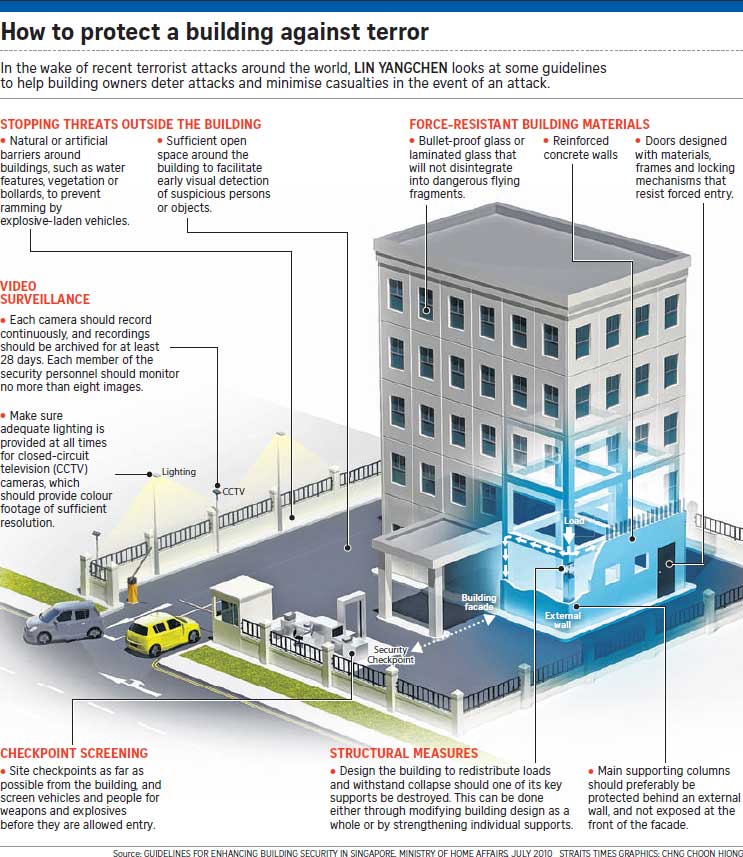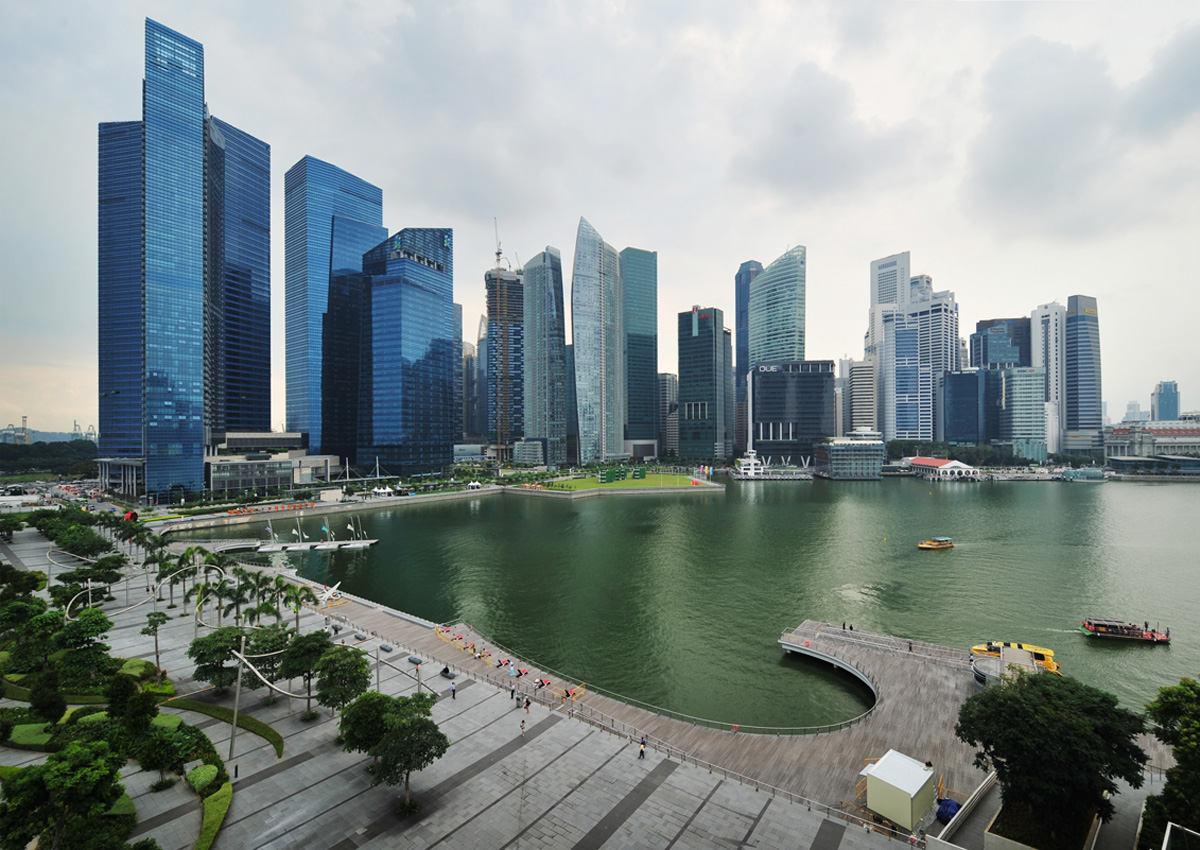Amid a heightened alert against the threat of a terror attack here, the Government is reviewing security guidelines for building owners, the Ministry of Home Affairs (MHA) has revealed.
An MHA spokesman said it has been working with key agencies – including the police, Singapore Civil Defence Force, Building and Construction Authority and Urban Redevelopment Authority – to update current guidelines. These will be brought in line with existing regulatory standards.
The ministry is also looking to offer greater clarity in the technical specifications of security measures, such as vehicle barriers, closed-circuit television (CCTV) systems and glass facade standards. “We expect to complete the review by the end of this year,” the spokesman told The Straits Times.
The ministry said last month that the threat of a terrorist attack in Singapore was at its highest level in decades and that it could pass laws that may require building owners to adopt stringent security measures. But the ministry did not give a definite timeframe.
The current guidelines, which are not compulsory, were published in 2005 and updated in 2010.

Called Guidelines for Enhancing Building Security in Singapore, the 138-page document sets out security measures such as using an anti-ramming perimeter line or blast-resistant structural materials.
Mr Derek Chew, general manager of security firm Soverus Consultancy and Services, said it was time the guidelines were reviewed, given that the threat landscape has changed a lot since then. In older CCTV systems, recorded images are often so poor that they cannot be used for facial recognition, he noted.
The Government could require or encourage building owners to do regular security audits, he said, adding: “Building owners should at least get a security consultancy to look at their premises. It’s no longer if, but when, an attack would occur.”
Currently, security consultants estimate that fewer than 10 per cent of buildings here adopt MHA’s existing recommendations.
They said constructing a building with blast-proof materials could drive construction costs up by as much as 15 to 20 per cent – and is the main reason for poor adoption rates among developers. These materials could include bullet- or shatter-proof glass, reinforced-concrete walls and structures that would not collapse even if one of the key supports was destroyed by a blast.
Using equipment such as X-ray machines and scanners would further drive costs up.
Mr Jasbir Singh, deputy head of Certis Cisco Consulting Services, said: “The question should not be whether we can afford to implement the measures. Rather, it should be, can we afford not to implement the security measures?”
Mr Toby Koh, group managing director of Ademco Security Group, said the economic costs and fallout from an attack would far exceed any added investment for security.
“All countries are porous; if terrorists are determined enough, they will be able to attack,” he said.
He said security did not have to cost top dollar, and a properly designed building could end up saving developers money in the long run.
Placing concrete planters around a building’s perimeter, for example, was a cost-effective method of preventing vehicle bombs, he said.
Buildings could also be designed from the ground up with better CCTV coverage, reducing the need for manpower on the ground.
“The mean cost of a security guard is about $3,000 to $4,000 a month. If you have 10 guards it’ll cost you $40,000 a month and $480,000 a year. Let’s say you could reduce this by half – that’s not spare change for anyone,” said Mr Koh.
Having said that, security consultants say it is difficult to mandate standard measures as each building faces its own set of risks.
“Exactly what preventive measures these should be will also be based on the threats identified during a thorough security risk assessment and the type of building concerned,” said Aetos Holdings security consultant Andrew Peck.
MHA also acknowledged in its 2010 guidelines that comprehensive protection against every possible threat is too expensive, and security has to be balanced with “economic viability and sustainability”.
There are signs that developers are taking greater notice of the terror threat. Security consultants said they have had more requests for their services from developers.
“Enhanced security also enables them to attract anchor tenants and clients who place a premium on the safety and security of their key assets and people,” said Mr Singh.
Certis Cisco has done consultancy work on commercial buildings in the civic district and data centres for commercial institutions.
Mr Singh said clients often ask for infrastructure that allows measures such as vehicle barriers and vehicle and personnel screening.
Major developers here said they are working with the police to ensure their premises are secure.
The public is also becoming more tuned in to the issue. Many here have posted their concerns on social media in response to recent news reports of terrorist attacks.
Mr Low Chee Kin, 43, a supervisor at a semiconductor company, said: “I think the best way to prevent a terror attack is to ensure total awareness.”
He suggested doing more to raise public awareness through education and multimedia, as well as ramping up existing measures like security checks and patrols.
He also suggested monitoring the Internet more closely for suspicious activities, and building better networks with other countries to coordinate anti-terror measures.

This article was first published on April 4, 2016.
Get a copy of The Straits Times or go to straitstimes.com for more stories.






